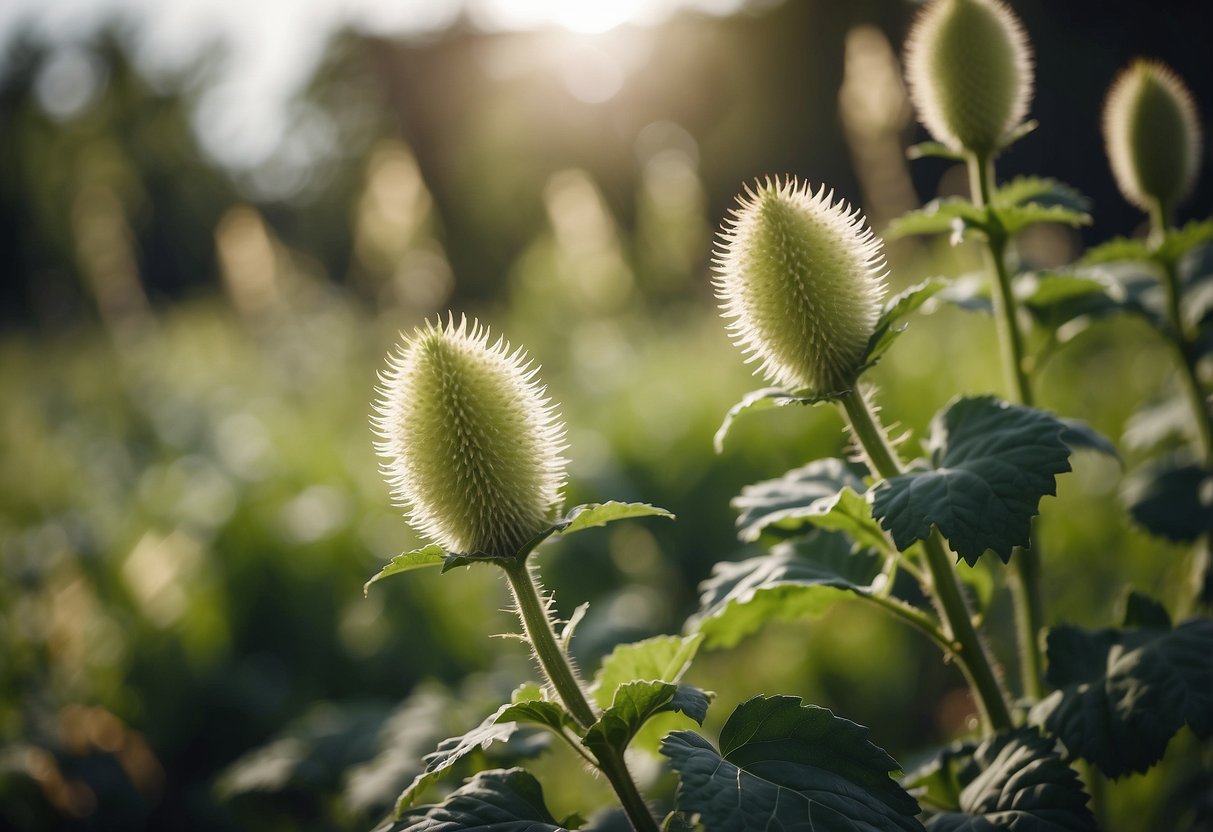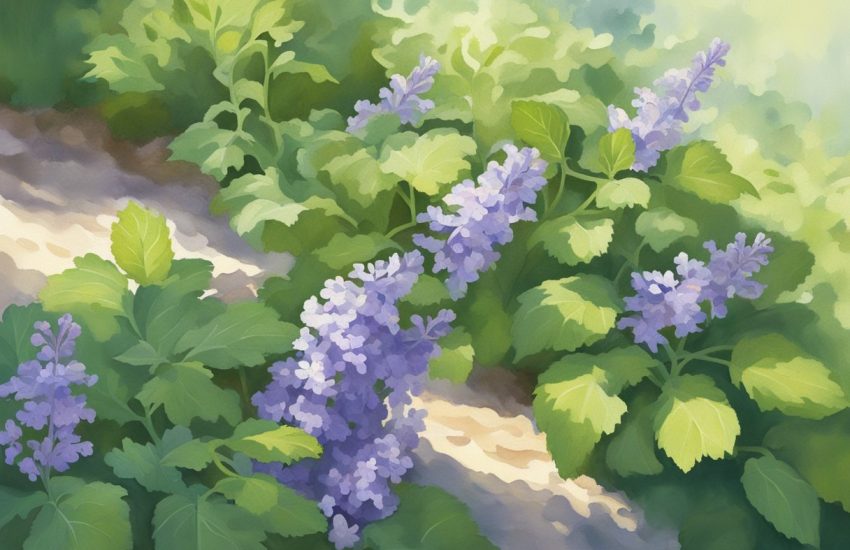Burdock Look Mullein Look Alikes: How to Tell Them Apart
Burdock and mullein are two plants that are often mistaken for each other due to their similar appearance. Both plants have large leaves and tall spikes of flowers that grow in the summer. However, there are some key differences between the two that can help gardeners and herbalists distinguish between them.

Burdock is a biennial plant that is commonly used in traditional medicine. Its roots, leaves, and seeds are all used for various medicinal purposes, including treating skin conditions, reducing inflammation, and promoting digestion. On the other hand, mullein is a tall, woolly plant that is often used to make tea or tinctures for respiratory issues such as coughs and congestion.
Despite their differences in medicinal uses, burdock and mullein can be easily confused due to their similar appearance. Gardeners and herbalists should be aware of the differences between the two plants in order to properly identify them. This article will explore the similarities and differences between burdock and mullein, as well as some common look-alikes that can be mistaken for these plants.
Identifying Characteristics of Burdock and Mullein
Burdock (Arctium Minus) Overview
Burdock is a biennial plant that can grow up to 6 feet tall. It is commonly found in gardens, meadows, and disturbed areas. Burdock leaves are large, heart-shaped, and have a velvety texture. The leaves grow in a basal rosette during the first year, and then grow on a tall stem during the second year. The flowers are pink to purple and are grouped together in a round, prickly ball.
Burdock has been used for centuries for its medicinal properties. It is commonly used to treat skin conditions, such as eczema and psoriasis. It is also used to detoxify the liver and to aid in digestion.
Mullein (Verbascum Thapsus) Overview
Mullein is a biennial plant that can grow up to 8 feet tall. It is commonly found on roadsides, meadows, and disturbed areas. Mullein leaves are silvery-green and grow in an unbranched leaf rosette during the first year. During the second year, the plant grows a tall stem with yellow flowers.
Mullein has been used for medicinal purposes for centuries. It is commonly used to treat respiratory issues, such as coughs and bronchitis. It is also used to soothe skin irritations and to aid in digestion.
Distinguishing Between Burdock and Mullein
Although burdock and mullein may look similar at first glance, there are some distinguishing characteristics that can help differentiate between the two. Burdock leaves are heart-shaped and have a velvety texture, while mullein leaves are silvery-green and have a velvety, silvery-grey color. Burdock flowers are pink to purple and are grouped together in a round, prickly ball, while mullein flowers are yellow and grow on a tall stem.
When identifying burdock and mullein, it is important to pay attention to the leaf rosette and flower structures. Burdock grows in a basal rosette during the first year, while mullein grows in an unbranched leaf rosette during the first year. In the second year, burdock grows a tall stem with flowers, while mullein grows a tall stem with yellow flowers.
In conclusion, burdock and mullein are two biennial plants that may look similar at first glance, but have distinguishing characteristics that make them easy to identify. Both plants have been used for centuries for their medicinal properties and are commonly found in gardens, meadows, and disturbed areas. By paying attention to the leaf rosette and flower structures, it is easy to distinguish between burdock and mullein.
Cultural and Medicinal Significance

Historical Uses in Traditional Medicine
Burdock and common mullein have a long history of use in traditional medicine. Native Americans used burdock root to treat a variety of ailments, including respiratory issues, and the plant was also used as a blood purifier. Common mullein was used by Native Americans to treat respiratory issues and was also smoked as a natural expectorant.
In traditional Chinese medicine, burdock root was used to treat a variety of conditions, including colds, flu, and sore throats. The plant was also used as an anti-inflammatory and to promote healthy skin.
Contemporary Applications and Considerations
Today, burdock and common mullein are still used for their medicinal properties. Burdock root is often used as a tea or supplement to support healthy liver function and to promote healthy skin. Common mullein is used as an expectorant and anti-inflammatory and is often found in over-the-counter cough and cold remedies.
However, it is important to note that both burdock and common mullein can be invasive and have naturalized in many gardens and other outdoor spaces. While they are often grown as ornamental plants, their invasive tendencies can cause problems in the community and may even lead to legal issues with the FDA.
Overall, while burdock and common mullein have a rich history of medicinal use, it is important to use them responsibly and to be aware of their potential to become invasive. When used properly, however, these plants can provide valuable support for a variety of health issues.


